By Anita Palada, Croatian Travel Journal – https://croatiantraveljournal.com
According to Greek mythology, red corals were made when Perseus beheaded Medusa and threw her head into the sea. Covered in blood from Medusa’s head, the seaweed at the bottom of the ocean turned into stone and became the venerated red coral.
On the island of Zlarin, in the Adriatic Sea of Croatia, red corals have always had magical power. Croatian travel writer Anita Palada takes us to the bottom of the sea, with Coral Hunter Mirko Milosević, and to the workshop of Coral Jeweller Miro Bešker. Here, he transforms the unprocessed aquatic gemstones to unique and acclaimed pieces of jewellery. Like a stone carver, Miro senses the energy of each raw coral and liberates the jewel inside.
Here’s the story of The Red Corals of Zlarin:

Deep dive for coral harvesting
“Today, I will dive up to 85 m deep, and if necessary a few meters deeper,” coral hunter Mirko Milosević thinks out loud while walking towards his boat. “Am I able to harvest coral on the old spots, or should I go and explore the new ones? I think I’ll go to the Kornati Archipelago and Zlarin today, and visit Mažirina and Žirje one of the next” – Mirko decides, finally turning the bow towards the island group of Kornati.

On the Southern side of Kornati, the sea is dead calm, resembling more to oil than to water. There is no one around except a few distant sailboats following the wind and a stray seagull cry: peace and silence. Mirko disregards the world that surrounds him; in his mind, he is already at the bottom of the sea, among the coral colonies.
He gets ready for yet another dive. He puts on his diving suit, secures the oxygen bottles on his back and the weight belt around his waist. A splash after, and Mirko is already beneath the surface.
His experienced movements take him deeper by the second. 30 m – 40 m – 60 m – 80 m. And there he is, descending, just like a slow shooting star on an empty sky, after just five minutes to a depth of 85 meters, in the pitch black, surrounded only by a balloon of light produced by his powerful scuba diver lamp. He swims among the corals, which span several hundred square meters. Today, he won’t go deeper like the last time at 118 m, when he broke his record.
Underwater Ecosystem
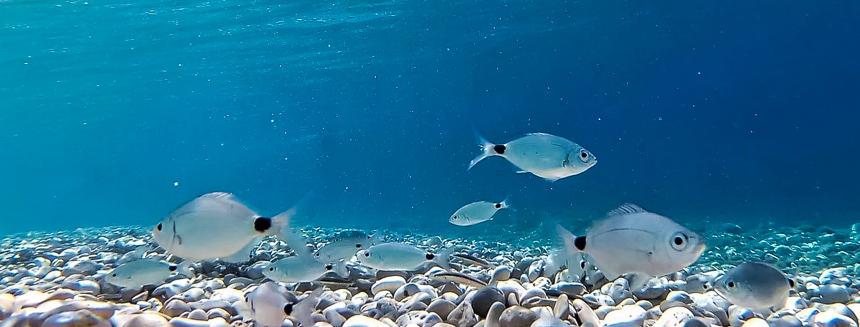
Mirko looks at his diving computer; it follows him, measuring every inch of his dive and limiting his time on the sea floor. There are only 15 minutes left for harvesting the corals. He’s cautious to the extreme, because ignoring the clock can be lethal at that depth. The thickest coral branches should be harvested quickly and swiftly, before the decompression dive, which will last two and half hours.
The coral soil is so beautiful to see yet so challenging to experience.
Mirko is already familiar with the underwater scenery lying on the bottom of the Adriatic Sea. The seabed is varied, beautiful, but somewhat wild. Different organisms cover it; corals, sponges, seaweed, and other creatures, locked in the eternal battle for a better place on the seabed.
In most cases, corals grow on the south side of the rocks, in holes, sustained by the sea, which brings them nutrients and plankton in the crystal clear seawater of the Adriatic. Sponges and bivalve mollusks are the coral’s worst enemy, because they try to overgrow them, suffocating the colony in the process and preventing the precious organisms from developing.
The dive comes to an end, and there he is! Mirko breaches the sea’s surface carrying around 1,5 kg of precious corrals in his net.
Protection and sustainability
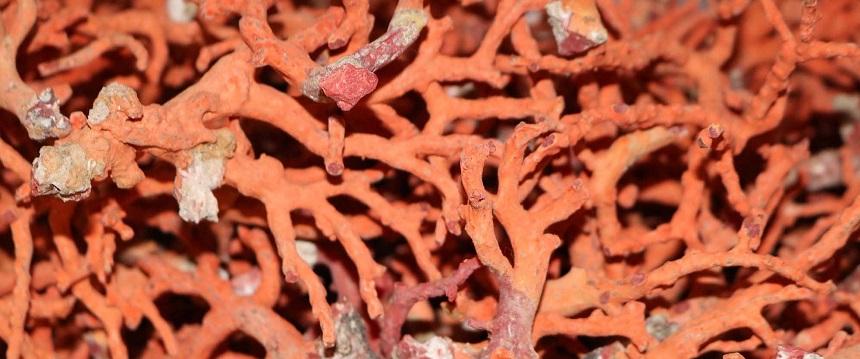
“Corals are a protected species, and the Republic of Croatia strictly regulates fishing,” Mirko tells us; “and so it should be – to protect the underwater world and us divers who fish them. Diving for corals is the most difficult and dangerous form of diving. You know how dangerous it is, when we coral divers can’t even buy life insurance from insurance companies”, explains Mirko, his face still frowned from the recent dive.
“Corals are animals, not plants, as many people think. They live in communities. Their calcium carbonate skeleton settles and grows, rising coral branches from the ground. They feed using polyps that look like flowers. While the polyps are outside, coral fields are white, turning red only upon their retreat.
I choose the branches for jewellery according to the structure, size, and prescribed thickness, not less than 6-7 mm, taking strict care of the species’ viability. Coral communities must remain diverse and productive to last in the future. It’s important if we in the future want to provide desirable and acceptable pieces to jewellers to be beautifully shaped,” says Mirko, turning the boat towards Zlarin, a small island near Šibenik, known as the Coral Island since ancient times.
The last coral jeweller of Zlarin

Mirko’s friend Miro Bešker processes, grinds, drills and polishes corals in the waterfront shop, turning them into unique pieces of desirable jewellery. Although Zlarin has long been famed for its for corals, Miro Bešker is the last master on the island to make jewellery from raw corals. “Necklaces, bracelets, brooches, coral rings is his long-standing job and passion,” says Mirko. “I like to talk to him about work and exchange novelties.”
“Miro Bešker is at his work-desk as usual,” Mirko tells me. Customers walk into the store, look at jewellery, buy, go out, and Miro doesn’t even notice them. I can see he’s absorbed by the craftsmanship: touching corals, watching them, spinning them under his fingers while probably assessing the shape to determine which piece of jewellery they would best suit. While Miro is in his creative ecstasy, Kristin, his longtime collaborator, is at customers’ service.
Seeing us at the door, he briefly leaves his work and joins us for a small talk about corals and jewellery making.
From Coral to Jewel

“Making jewellery is a delicate business. It is essential to feel the coral at each contact. When I make jewellery out of thicker parts of coral, I’m in a complete Zen-State of mind. These thick pieces are expensive and appreciated. I’m hyper-focused, creative and cautious in making it, because I have to make it look as beautiful as possible.
Their value deserves it. When I work with metals, gold or silver, I feel one kind of energy and entirely another when I work with corals” Miro explains us, drawing us into his coral world.
His ambition is to create unseen, one-of-a-kind pieces of jewellery; a ring, a broch, a necklace, constantly searching for new sources of inspiration. Each piece has its specific energy, including coral. “Sometimes, inspiration finds me and sometimes I have to wait for days,” he said laughingly. “When my work doesn’t “flow,” I leave everything behind and wait for a moment of inspiration. Sometimes, when I’m angry. If it’s metal, I put it in the fire again and melt it; if it’s coral, it goes for new tearing, grinding, and polishing. If we are not in synergy at that moment, it is better to part for a day or two than to struggle. Is is the same with a woman,” Miro says, laughing again.
Artistic inspiration shapes the jewel
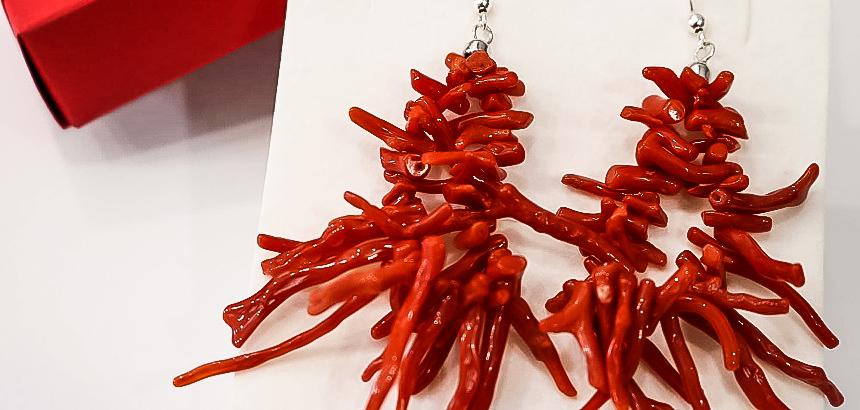
There are times when Miro indulges, working only for himself and his pleasures. “These are artistic urges and moments when jewellery almost creates itself, like the jewel is already inside the coral, and I just remove the superfluous,” he adds jokingly. “No, they don’t always have to be big pieces of jewellery. They can be miniatures. It all depends on my current mood and feelings. That’s how artists work; there’s no time or order in our world. When inspiration takes over, I indulge her. It’s all about the moment. When I use it, I create a beautiful piece of jewellery; if not, it remains trapped in me.
While he’s working, he never thinks about whether that piece of jewellery will have commercial value. It’s purely creating. “Coral leads me towards what to make of it. I try to leave it as much as possible in its original form. Sometimes, I already have a vision of what this piece will ultimately look like in the drafting phase, but not always. Sometimes it guides me, and it turns out what turns out to be. It’s often the best.” Miro says, he has never had a dissatisfied customer in his long career, which he regards as a great pleasure and recognition.
Today, many things are routine, but it wasn’t always like that. At first, Miro was terrified of destroying something. He overcame that fear a long time ago, but today he’s looking for new challenges, proclaiming; “What’s an adrenaline-free job? “
No chemistry. No fakes. Just nature
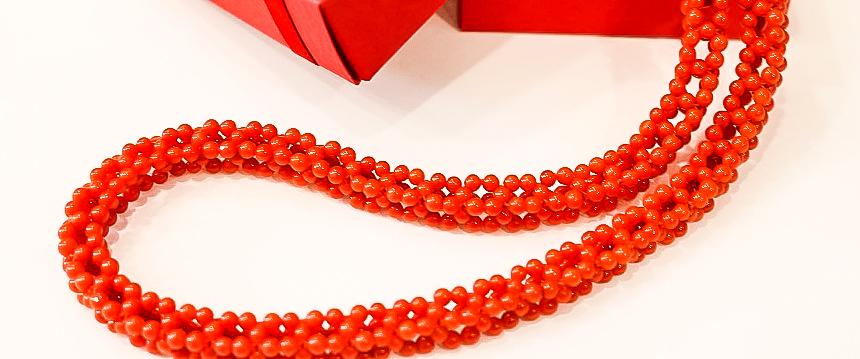
There’s a long way to go from raw coral to a nice piece of jewellery. Raw corals are sorted by class, deciding which piece of jewellery they will become. Each part of the coral array has its purpose. Fragments of coral should be treated so that there is as little waste as possible, in order to achieve as much value as possible. For Miro, this is not much of a problem. As soon as he takes a piece of raw coral in his hands, he knows where it belongs and leaves the aesthetic form to the current artistic inspiration.
Miro dreamed about his goldsmith-coral business from a young age. He prepared, little by little, spontaneously, not knowing where it was taking him. He gave in, allowing his artistic soul to wander. And it worked out! Today he maes a living by doing what he loves most. “The bond between me and my jewellery is indissoluble. And when they leave the store, part of me is forever trapped in them.”
By forming these little coral twigs, “I feel some special energy flowing through my fingers and filling me with pleasure. I can’t wait for a new day to dawn and keep hanging out with these interesting sea beings,” Miro beams.
Polishing is the most important and long-lasting stage that lasts up to several days. A lot of work is necessary to get a nice piece of shiny jewellery with pure color. First, natural corals are cleaned, and branches are torn to pieces. Each piece is sanded, shaped, drilled, and polished. “When the surface is polished to perfection, the high gloss is obtained. There’s no chemistry, no additives. Coral colors are different, ranging from 10 to 15 shades, from light to dark red,” Miro explains.
Craftsmanship handed down through generations
Miro Bešker came to the island of Zlarin about 20 years ago. He took over the job from his father-in-law, Vjekoslav Duhović, an excellent coral artist and well-known jeweller from Split. “This is a manufactory business, and, typically, it is a family business. My job was passed to me by my father-in-law. He had faith that I would continue his journey. I do my best, and I believe that I did not and will not disappoint him. The tangible result is the buyers who come for jewellery from all over the world.”
Miro is now the only master on the island. There were many interested parties, but they quickly gave up when they realized how patient and dedicated one has to be in this line of work.
Corals for luck
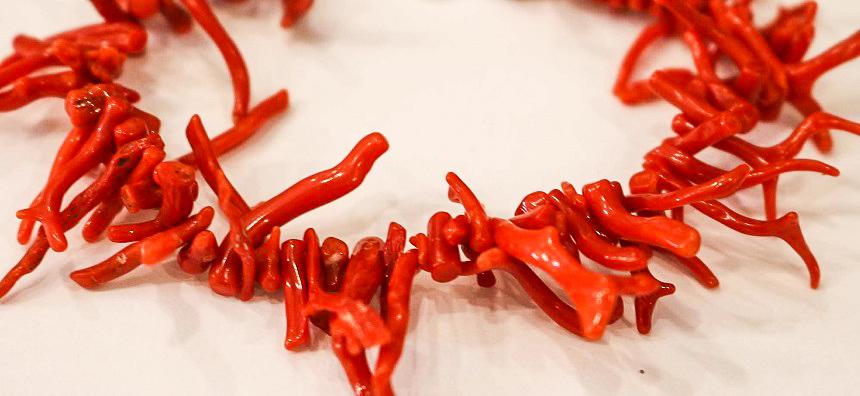
Kristin has been selling the corals Miro makes for 20 years. She was born in Zlarin, and has been bejewelled by corals from birth. “We, here on the island, inherit corals from our grandmothers and mothers. These valuable gems are passed down from generation to generation, and are part of the family treasure. I’m so privileged to work with them.”
Young girls on Zlarin are eagerly awaiting the day to get coral jewellery. They often receive it as a gift already at birth, at marriage, or some other important life event.
According to the island’s tradition, corals are gifted to loved ones, to bring good luck in life.
I was happy that, by talking to these fascinating people, I touched the coral colonies at the bottom of the sea, and enjoyed the divine glow of the red corals.
Author: Anota Palada
Transcreation: Sanjin Grandić
About Anita Palada
Anita Palada is a journalist from Croatia, specialized in travel and tourism. She writes the most about her country Croatia, especially about different picturesque places along the Adriatic coast, like Plitvice lakes. But not only from Croatia! She also travels, explores, and talks with people worldwide to convey exciting stories about interesting destinations, heritage hotels, good restaurants, traditional food, and tasty wines, like this article about Croatian Wine. Read more on https://croatiantraveljournal.com



